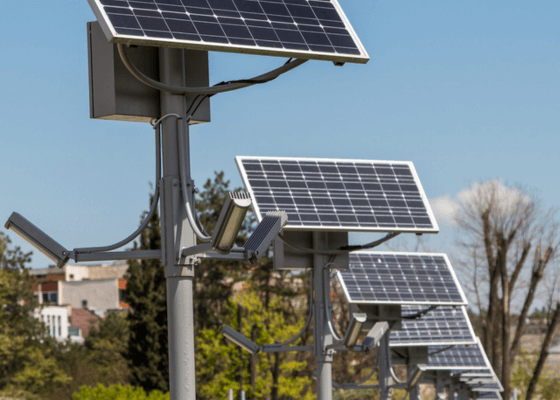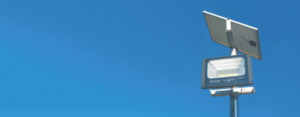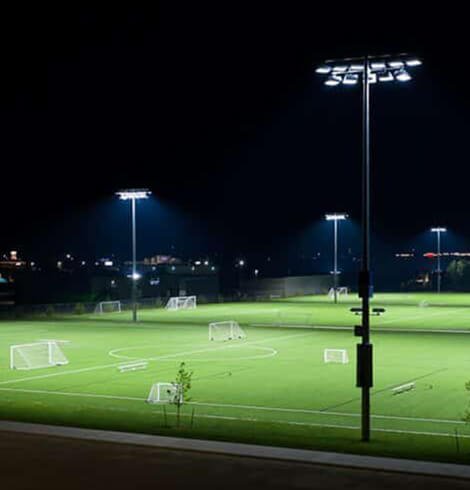When I invest in solar lights, I expect them to perform flawlessly. After all, that’s the whole point—clean, efficient energy with cost savings over the long term. But here’s the truth: even the best solar lights can underdeliver if the panels aren’t installed at the right angle.
For maximum solar light efficiency, position the solar panels south (north in the Southern Hemisphere) with a 30–45° tilt based on your location. Adjust seasonally—flatter in summer, steeper in winter—for better sunlight capture. Proper alignment can boost energy output by up to 25%.

Optimizing solar light installation angles is a straightforward but crucial step. It improves sunlight capture, boosts efficiency, and ensures systems deliver consistent returns over time.
Let’s get into it. From understanding the science behind solar panel angles to overcoming challenges like shading or tricky rooftops, I’ll walk you through everything you need to know. This is all about practical, actionable solutions—because that’s what matters when results are on the line.
Why Is the Solar Panel Angle Important?
Every solar street light project I’ve worked on has one simple goal: maximum output from every panel installed. But that doesn’t happen by chance. The angle of a solar panel directly affects how much sunlight it absorbs, which determines how much energy it produces.
A well-optimized solar panel angle can increase energy production, minimize waste, and ensure the system operates at its full potential.

When panels aren’t positioned correctly, you’re losing efficiency—and that’s money left on the table. For instance, an improperly tilted panel might capture up to 20% less sunlight over the course of a year. That’s a hit no one wants to take. By optimizing the angle, I make sure every panel in my system is performing to its maximum potential, delivering measurable results.
What Factors Influence the Best Solar Panel Angle?
When setting up a solar project, I always look at three key factors to determine the ideal panel angle: latitude, seasonality, and climate.

The ideal angle depends on where the system is located, the time of year, and the local weather. These factors ensure panels are perfectly aligned with the sun.
Geography plays a huge role. Near the equator, panels work best with a flatter tilt. Further north or south, steeper angles are needed to align with the sun’s path.
I adjust my panels seasonally to follow the sun’s position—flatter in summer, steeper in winter. This keeps output steady year-round.
In snowy areas, I go for steeper tilts to let snow slide off easily. Meanwhile, in sunnier climates, a static angle might work just fine.
How Should Solar Panels Be Positioned?
The right placement makes all the difference. A small tweak in direction or tilt can turn a good installation into a great one.
Find the Best Direction
In the Northern Hemisphere, panels should face south. This ensures the longest exposure to the sun’s rays throughout the day. In the Southern Hemisphere, the rule flips: panels should face north. A compass or a smartphone app can help you pinpoint the exact direction.

Set the Right Angle
The ideal tilt angle is usually equal to your local latitude. For instance, if you live at 30° latitude, a 30° tilt works best. This setup captures maximum sunlight year-round.
However, seasonal changes can tweak this rule. In winter, when the sun is lower in the sky, the tilt angle should be increased to position the panels as perpendicular to the sunlight as possible. In summer, when the sun is higher in the sky, the tilt angle should be reduced.
Consider Adjustable Mounts
Want to go the extra mile? Opt for adjustable solar mounts. These systems allow you to manually or automatically shift the tilt angle to match seasonal changes. They’re especially useful in regions with significant seasonal variation, ensuring your panels perform at their best throughout the year.
What Techniques Optimize Solar Panel Angles?
Every system has its quirks. Over the years, I’ve tested different methods to ensure solar panels are always positioned for maximum efficiency.
Seasonal adjustments, adjustable mounts, and tracking systems are all effective ways to optimize solar panel angles.

Seasonal Adjustments
Twice a year, I adjust my panel angles—steeper for winter, flatter for summer. It’s a simple step that pays off in better energy capture.
Adjustable Mounts
For setups where regular tweaks are needed, adjustable mounts are invaluable. They make fine-tuning easy without requiring expensive overhauls.
Tracking Systems
These are my go-to for large-scale projects. They follow the sun’s path throughout the day, ensuring panels are always in the best position. While pricier, the efficiency gains are worth it for the right projects.
How to Overcome Common Installation Challenges
Not every solar street light project site is ideal. Over the years, I’ve faced roof constraints, shading, and regulatory hurdles. Each one needs a tailored solution.
Flexible mounts, strategic shading solutions, and compliance with local regulations ensure even challenging installations perform well.

Roof Constraints
Some roofs just don’t cooperate. I use specialized mounting systems that adapt to unusual angles or limited space.
Shading
I can’t stress enough how important it is to avoid shadows. Trees, nearby buildings, even a poorly placed chimney can reduce output. Careful site analysis is critical.
Regulations
Local rules can be frustrating, but they’re non-negotiable. I make it a point to review them upfront to avoid costly delays or redesigns.
What Tools Help Determine the Best Angle
I never rely on guesswork when setting up solar panels. Instead, I use tools and expert input to get the angles just right.
Solar calculators like PVWatts Calculator and professional consultations provide precise and actionable recommendations.

Tools like PVWatts make it easy to plug in the location and get tailored advice. For more complex setups, especially those with shading or unique obstructions, consulting an expert adds an extra layer of confidence. These resources save me time and ensure I get the best results for every project.
What Are the Economic Benefits of Optimized Solar Panel Angles?
Getting the angles right isn’t just about energy—it’s about dollars and cents.
Properly aligned panels boost energy production, reduce costs, and accelerate ROI, especially for large-scale projects.
More sunlight equals more energy, which means fewer expenses on supplemental power. For large-scale installations, this adds up quickly, improving ROI and creating a long-term financial advantage. Optimized systems don’t just perform better—they make better business sense.

Conclusion
Optimizing solar panel angles is one of the simplest yet most impactful steps I take in any solar project. By aligning the panels correctly, I ensure they perform at their peak, delivering consistent energy and financial returns. This attention to detail makes all the difference. If you’re ready to unlock the full potential of your solar lights, start with the angles. It’s worth it.













